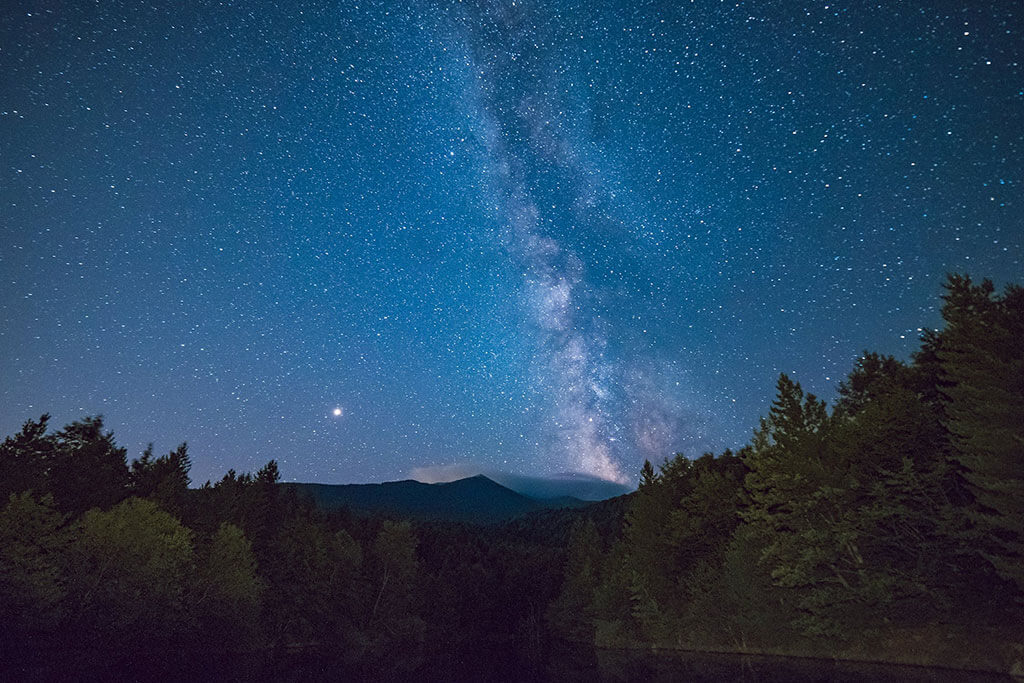
18
May
Millennium Square Stargazing Night (GO for Friday)
Everyone is invited to join us and Durham Skies on May 18 for stargazing at the edge of Lake Ontario. Take a free look through different kinds of telescopes (including solar-filtered scopes) to get close-up looks at sunspots, craters on the Moon, brilliant Venus and Jupiter.

16
May
Dark Sky Star Party (GO for Wednesday)
See the milky way and galaxies with the unaided eye. Point your telescope to find the many dim deep space objects that sprinkle the sky. Away from Toronto's light polution, there is so much to see. We observe from the Long Sault Conservation area, an hour outside of Toronto. We meet around dusk once a month in the parking lot for views only seen in dark sky conditions. We hold this event on the first clear night of our week-long window, so the date and time are determined closer to.

5
May
Solar Observing (GO)
Join us at the Ontario Science Centre for our monthly Solar Observing on the TELUSCAPE observing pad. This is the area in front of the Science Centre's entrance. We use specialized telescopes that are safe to aim at the Sun. Check our home page on the Friday prior for go/no-go calls as this event is weather dependent.

28
April
Solar Observing (NO GO)
Join us at the Ontario Science Centre for our monthly Solar Observing on the TELUSCAPE observing pad. This is the area in front of the Science Centre's entrance. We use specialized telescopes that are safe to aim at the Sun. Check our home page on the Friday prior for go/no-go calls as this event is weather dependent.

26
April
City Star Party (GO for Thursday)
Hover above the moon like an astronaut and get eye-to-eye with the planets. Find colourful stars, star clusters, bright nebulae and even another galaxy. Our monthly City Star Party is the place to catch universe from within the city limits at Bayview Village Park. If you don't have a telescope then you will find many astronomers who would love to share a view. If you are thinking of buying a telescope, viewing with other people's equipment is the best way to make a good choice. If you have a telescope or binoculars, please bring it!

20
April
Millennium Square Stargazing Night (GO for Friday)
Everyone is invited to join us and Durham Skies on April 20 for stargazing at the edge of Lake Ontario. Take a free look through different kinds of telescopes (including solar-filtered scopes) to get close-up looks at sunspots, craters on the Moon, Venus, and the springtime constellations. Peer deep into space and try your hand at spotting faint star clusters and nebulae. You can even bring your own telescope along and we'll give you expert advice on how to use it better.

16
April
Astronomy Week Solar Observing
Join us this week if skies are clear!

21
April
Ontario Science Centre: International Astronomy Day
Celebrate International Astronomy Day at the Ontario Science Centre!

16
April
Dark Sky Star Party (NO GO)
See the milky way and galaxies with the unaided eye. Point your telescope to find the many dim deep space objects that sprinkle the sky. Away from Toronto's light polution, there is so much to see. We observe from the Long Sault Conservation area, an hour outside of Toronto. We meet around dusk once a month in the parking lot for views only seen in dark sky conditions. We hold this event on the first clear night of our week-long window, so the date and time are determined closer to.

24
March
Solar Observing (GO)
Join us at the Ontario Science Centre for our monthly Solar Observing on the TELUSCAPE observing pad. This is the area in front of the Science Centre's entrance. We use specialized telescopes that are safe to aim at the Sun. Check our home page on the Friday prior for go/no-go calls as this event is weather dependent.
